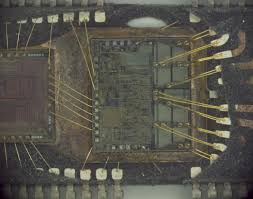STMicro STM32F101RB MCU Cracking
The TIM2, TIM3, TIM4 general-purpose timers can work together or with the TIM1 advanced-control timer via the Timer Link feature for synchronization or STMicro STM32F101RB MCU Cracking.
TIM2, TIM3, TIM4 all have independent DMA request generation.
These timers are capable of handling quadrature (incremental) encoder signals and the digital outputs from 1 to 3 hall-effect sensors to facilitate the progress of IC breaking. Their counters can be frozen in debug mode.
These timers are based on a 16-bit auto-reload upcounter and a 16-bit prescaler by Unlock MC68HC705C8A MCU Flash Memory. TIM15 has two independent channels, whereas TIM16 and TIM17 feature one single channel for input capture/output compare, PWM or one-pulse mode output.

STMicro STM32F101RB MCU Cracking
The TIM15, TIM16 and TIM17 timers can work together, and TIM15 can also operate with TIM1 via the Timer Link feature for synchronization or event chaining. TIM15 can be synchronized with TIM16 and TIM17.
TIM15, TIM16, and TIM17 have a complementary output with dead-time generation and independent DMA request generation Their counters can be frozen in debug mode for the purpose of Crack MC68HC705J1 Microcontroller Memory. These timers are mainly used for DAC trigger generation. They can also be used as a generic 16-bit time base.
The independent watchdog is based on a 12-bit downcounter and 8-bit prescaler. It is clocked from an independent 40 kHz internal RC and as it operates independently from the main clock, it can operate in Stop and Standby modes. It can be used as a watchdog to reset the device when a problem occurs in the process of MC68HC711PH8 Microcontroller Eprom Software Duplication, or as a free running timer for application timeout management. It is hardware or software configurable through the option bytes. The counter can be frozen in debug mode.

